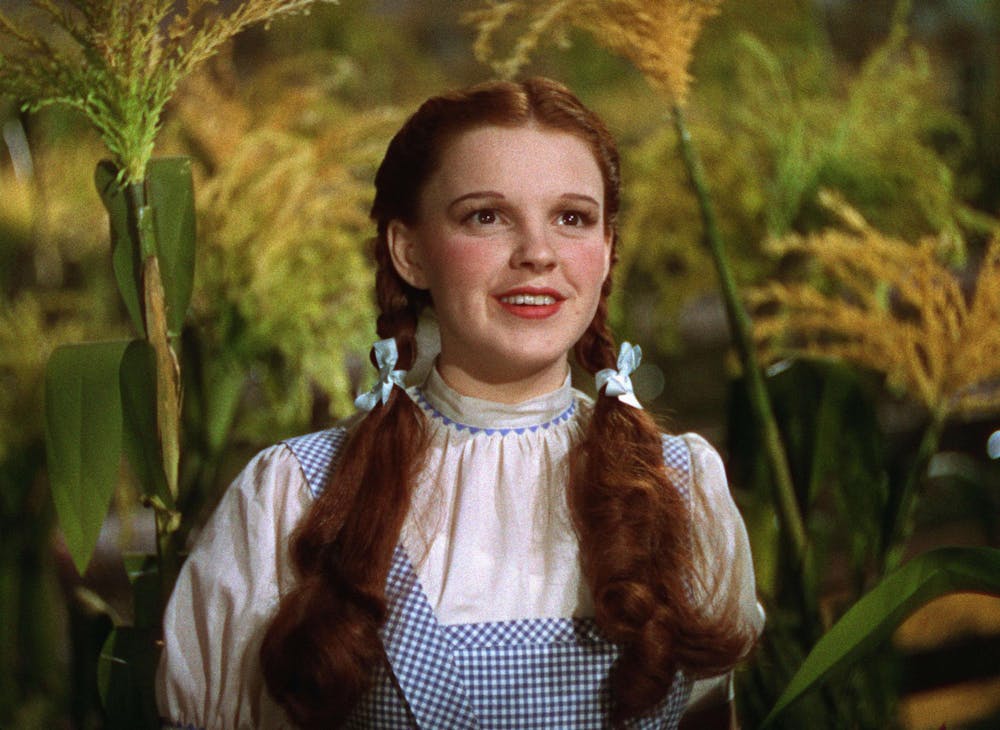Editor's note: This story contains brief mention of child abuse and exploitation.
Judy Garland’s lilting voice transports viewers into the black-and-white world of Kansas in “The Wizard of Oz.” 6-year-old Shirley Temple struts down the aisle of a train car, the men in the seats smiling at her precocious nature in “Bright Eyes.” Tiny Mara Wilson escapes a bully and warms Americans’ hearts in “Matilda.”
These are nostalgic scenes, familiar to Americans young and old. Pint-size prodigies have long been a staple of our TV screens, and in recent years, have also become stars of social media. Instagram is awash with child influencers and large vlogging families have become features of YouTube. At first glance, such content about children appears to be innocent. But hidden beneath it all, whether it be a 1920s movie or a 2023 YouTube video, is the truth: there is a shocking lack of protections for child performers.
Watching the heart-warming movies above, it’s easy to forget the harmful practices behind the filmmaking and the negative attention that ensued. In the 1932 shorts “Baby Burlesks,” Shirley Temple was locked into a box and forced to sit on a block of ice when she misbehaved on set. During the filming of 1938’s “The Wizard of Oz,” Judy Garland was prescribed stimulants and depressants by the head of the studio, Louis B. Mayer, to help her cope with the long hours. After her appearance in classics such as 1992’s “Mrs. Doubtfire,” 50-year-old men sent Mara Wilson love letters and her face was edited onto child pornography. All three of these actresses were still children, but their role in filming movies made them vulnerable to treatment as if they were adults. They were placed into potentially dangerous situations. In short, their safety and wellbeing were placed behind their role as movie stars.
I imagine many are horrified by these stories of abuse, but we’re perpetuating similar abuse in today’s world through our embrace of mommy vloggers and family influencers on social media. The type of media may be new, but the way children’s lives and talents are used to entertain the masses, often with no regard for the child’s wishes or safety, is not.
Today, many children are not actors or models in the traditional sense. Rather, the everyday child living their life is a character, and all of life is an opportunity (to some) to produce content. Consider popular YouTube channels of the 2010s, such as the Bratayleys and the Ballinger Family. Their appeal is the viewer's ability to follow along with their everyday lives. For children, this can be particularly harmful. Home is no longer a refuge. There is no place to let their guard down, because there is always the expectation or potential that daily life is being filmed, posted and monetized.
Just as with child actors, there are many questions about child autonomy. Do the children really have a say in whether they take part in creating content? Further, can children consent to being filmed? Many say that children lack the brain development to fully grasp the longevity and reach of content. Grown up children of so-called mommy vloggers have testified about their total lack of privacy and enduring digital footprint. They are advocating for a law that would require kids to have any content of them as minors removed once they turn 18.
Some experts such as Madyson Edwards of Texas Tech University express that they are concerned about the total lack of protections for child influencers. There is no limit on working hours and no requirement that parents compensate their children in any way. And the internet can be a dangerous place. YouTuber Matt Watson created a video about how the YouTube algorithm facilitates predatory adults’ ability to connect with each other, trade contact information and access actual child pornography.
So we arrive at the greater question: Who is to protect these children? Though I hope most parents are doing what they believe is best for their children, we cannot leave child protection solely to parents. Faced with the prospect of riches and fame, far too many will decide that filming their children, even in their most private moments, is worth the moral ambiguity.
We, the public, must step up. We must pressure our lawmakers and social media companies to take a stance. At a minimum, laws protecting child actors must be extended to also protect child influencers. For example, influencers profiting off their children’s image should be required to abide by the Coogan Law, which mandates that 15% of a child’s paycheck be put in a savings account that the child can access when they turn 18. However, this is a band aid fix. There must also be a culture shift.
We too often center our own entertainment over the reality of child media stars. We must refuse to contribute our money and attention to media that monetizes off children too young to truly consent. If child-centered YouTube channels, for example, lose popularity, creators will turn to other methods to gain viewers, rather than shoving a child in front of the camera. Social platforms can assist by limiting comments on posts of children and demonetizing content and channels that are centered around minors. Refusing to contribute money to platforms and creators that allow this exploitation to happen is a tangible way for all of us to prevent continuing the cycle of media exploitation of children.
Samantha Camire (she/her) is a freshman studying journalism with a minor in Spanish.






